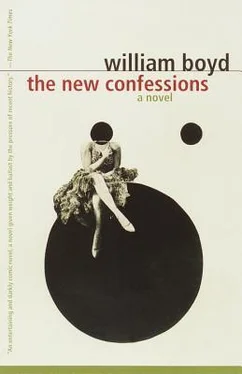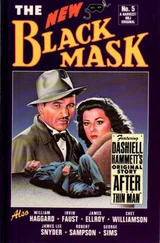“No, no. Got it now. Gallway’s. Never forget a face. Grand you’re here. Could do with a few more Stanburians, I can tell you.”
I did not correct him.
“Remember the motto? Plutôt fort que piquant . That’s the spirit.”
“Yes, sir.”
At Dunkirk, apart from doing the Naval Division’s fatigues, we were sent on route marches with Louise around the warm and dusty countryside. “Route strolls,” as Maitland Bookbinder referred to them. We were relieved to march up to Coxyde-Bains to take over the end of the Belgian line. The skirling music of the pipes led us through battered Belgian villages, gazed upon by the incurious eyes of the few inhabitants who turned out to watch us pass. There was a discernible quickening of our spirits as we approached these hamlets. Our plod became a swagger; our caps were set at extravagant angles. Louise, on a bicycle, would ride by and implore us to throw away our cigarettes. “Nao ciggies, chips,” he would say in his South African accent. “Unsoldierly. Come on, please, fags out.” We puffed on regardless. Louise gave up quickly. He had not been to public school — not that we cared — and I think he felt socially uneasy with us. It was strange, but every time we passed through a village we seemed to pick up an escort of four or five dogs that scampered alongside for a mile or so, sniffing and tails wagging, before abandoning us.
The line at Nieuport is where I really date the start of my military career. At Dunkirk we had been little more than servants and laborers in our working-party duties for the disdainful Naval Division. At Coxyde in reserve, or in the trenches at Nieuport, at least we felt more like soldiers. We were facing the enemy after all, albeit under reasonably pleasant circumstances. Here too I began to shed the integument of gloom and self-loathing that had enfolded me since that black weekend at Charlbury. I began to emerge. A fragile self-confidence established itself. I started to correspond with Hamish and learned something of the events subsequent to my departure from school.
Our plan had worked well. I was not discovered absent until the next day. Angus was dispatched to Galashiels Station and then traveled up and down the line searching for traces of me. Hamish’s role was discovered swiftly and he was duly flogged. He wrote: “It was as bad as everyone had said. I do not think I have ever experienced such pain before. Still, it was a useful experience. Now I know what it is like to be mercilessly beaten. (Minto is quite batty, I am sure.) It all adds to one’s store of knowledge.” He sounded almost grateful, as if I had opened a locked door in his life. But it made me feel guilty.
Our routine at Nieuport was straightforward. Two companies held the line for a week and were relieved by the other two. The resting companies occupied battalion reserve (an orchard) at Coxyde-Bains and occasionally supplied fatigue parties for the Royal Marine siege gunners. After each company had spent a total of a month in the line, we returned to brigade reserve at Wormstroedt, some distance away, behind the British sector of the Western Front. Life at Coxyde-Bains was pleasant, if boring. The town was out of bounds to us, but not to Belgian troops. There was a sizable detachment garrisoned here as King Albert had his HQ at nearby La Panne. There was a small closer village, St. Idesbaldle, which we were allowed to visit, with two cafés — one for officers, one for other ranks — but it did not offer much in terms of diversion. Our time was taken up with prettifying the reserve lines (creating ash-clinker paths with whitewashed stone borders, allotments, building a clay tennis court for the officers’ mess), route marches, close-order drill, musketry practice and endless sessions of battalion sports of every type. About two miles away, near St. Idesbalde, was a large Belgian field hospital. Once or twice we passed this, either marching or on a cross-country run, and we saw the off-duty nurses with red crosses on their starched aprons and what I took to be an order of Belgian nuns with headdresses like stiff white-linen sombreros, the vast brims complicatedly folded. This view excited some of our more sensual types — Leo Druce and Noel Kite in particular — who instantly planned to strike up acquaintances. Little was achieved beyond vain shouts of introduction as we jogged past — much to Louise’s irritation.
My main pleasure at Coxyde-Bains — when I had the chance — was to walk on the beach. If one left the orchard and walked down a lane past a farm, one soon came to the dunes. They evoked for me memories of Scotland and, when the tide was out, the huge flat beach recalled the West Sands at St. Andrews in Fife. Sometimes I would walk west towards Dunkirk. On other occasions I would walk east towards Nieuport and the front line. I would stop when I could just see the revetments and sandbags at the mouth of the Yser River at Nieuport, which marked the position I so often occupied as l’homme de l’extrême gauche . At low tide the furthest extension of the wire was often exposed and I was often obscurely tempted to walk on and wade round the double entanglements, then traverse the mile of no-man’s-land and perhaps bypass the German line too. There I might meet my German counterpart: a young private, a little unhappy, uncertain of his future, whiling away his off-duty hours with a morose stroll on the sands at Ostende-Bains. Perhaps we would simply nod “Good morning” and saunter on? Perhaps I might ask him for a light: Hast du Feuer? It was a pleasing fantasy.…
One day, I went down to the beach in just such a mood of contemplation. Hands in my pockets, collar up against the wind.
Then I saw, slightly distorted by the reflections on the wet gleamy sand, what I took to be a man running along the water’s edge. Absurdly, spontaneously, I thought: was this my German doppelgänger come to meet me?… I peered at the distorted black shape, trying to separate bouncing solid from bouncing reflection. A man? A small man? He was certainly moving in a curious gait. I seemed to see a cripple, terribly bent over, hunched, traveling along in a fast lolloping limp.
Then as I looked the enigma resolved itself. A dog, rather large, bounding along in a kind of easy half gallop, pausing occasionally to sniff at seaweed or a piece of tide wrack before starting off again. I watched it approach. Then it saw me and changed course. The loose-limbed canter became a pelting, ears-back gallop. I felt uneasy, then fearful. Bloody hell, I thought crazily, what if this is some sort of Hun secret weapon? Killer dogs loosed behind the lines? Mad … rabid.
I looked down at my heavy boots. I’ll kick it in the throat, I said to myself, none too confidently. The dog was three hundred yards away and approaching fast. I threw away my cigarette, turned and ran for the dunes. I was seriously impeded by my greatcoat and heavy boots. I flashed a glance over my shoulder. Christ! It was coming at me like a cheetah — head down, tail out. I could hear the skittering thump of its feet on the sand.
“ Help! ” I bellowed aimlessly at the tranquil dunes. “ Bastaaaaaard! ”
The dog was on me as I lumbered vainly along. Jumping up and down, barging into me, tongue lolling, darting forward and back, crouching down like a pseudo-beast of prey in that irritating manner dogs have when they want some fun. I stopped, threw my head back and gulped air, hands on my hips.
The dog, I saw, was quite big, with untidy gray fur and a blunt stupid face. It looked like a cross of Irish wolfhound, setter and bull terrier. It came up to me, tail wagging, and stuck its nose in my crotch.
“Get off! Dirty bugger!”
I slapped its face away. I felt hot, angry and itchy from my hectic run. I wiped sweat from my eyebrows and upper lip. My peaceful, contemplative stroll had been ruined by this idiot hound, which was now, as far as I could see, eating sand.
Читать дальше












